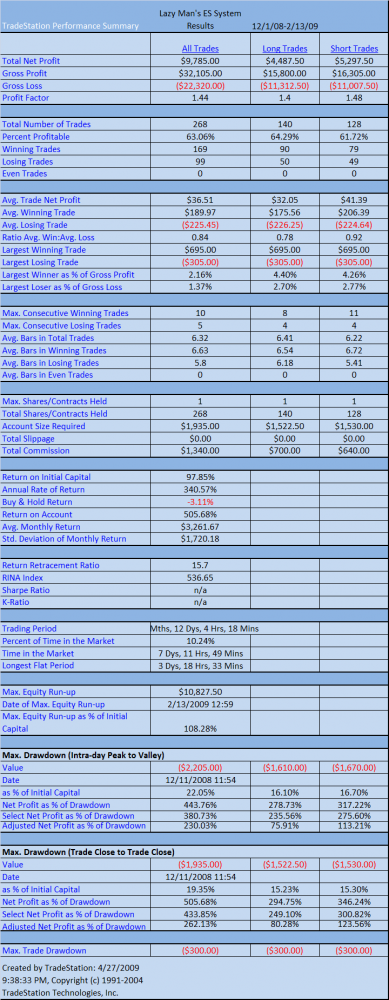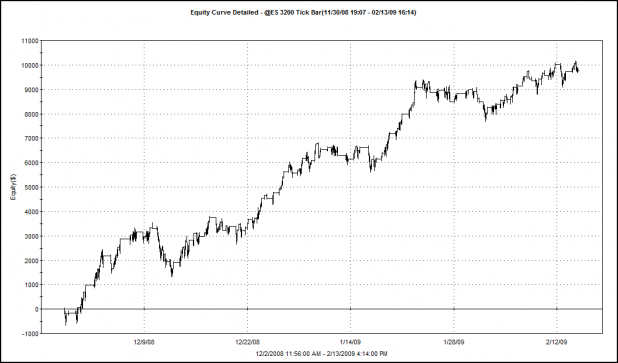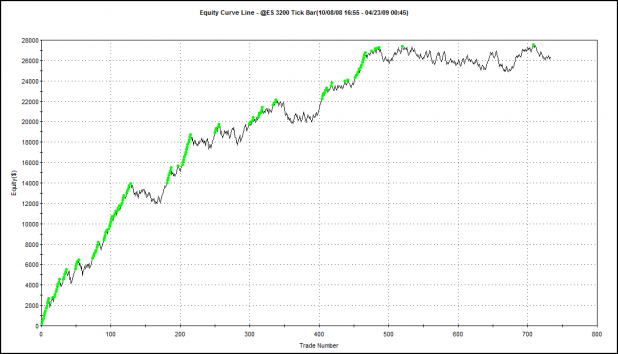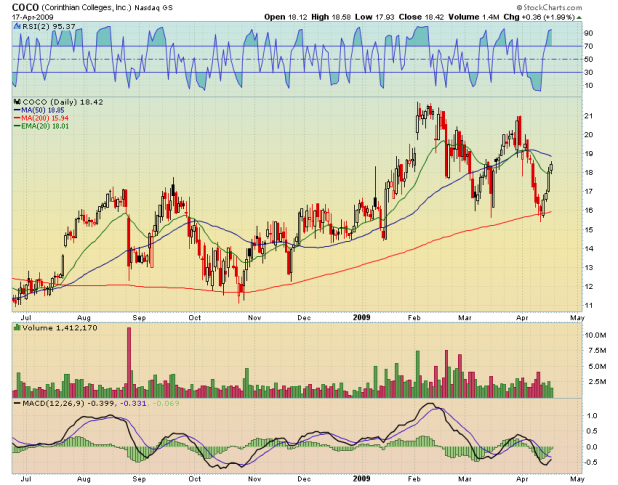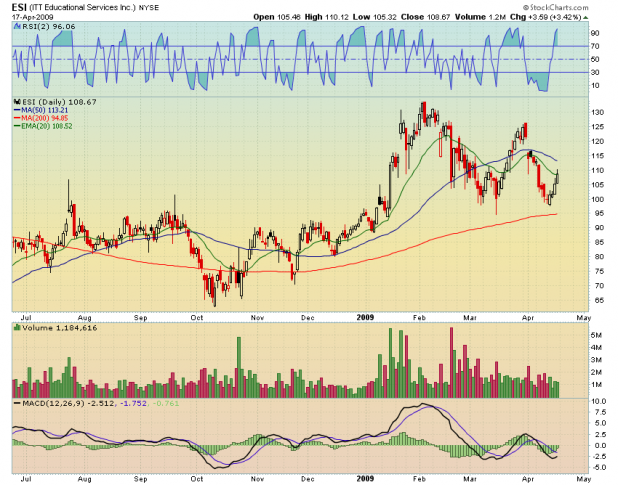The SEC is currently seeking comments regarding Short Sale Price Test and Circuit Breaker Restrictions.
I encourage urge traders and investors to comment on the SEC’s website linked here:
http://www.sec.gov/news/press/2009/2009-76.htm
After reading through a vast majority of the comments, it is obvious that the most of the people leaving comments are not stock traders and have little investing knowledge other than what they have been told by the guy or gal who sells them their 401K products. This is a very dangerous situation. The SEC is being swamped by citizens who are responding emotionally to losing much of their retirement funds over the past year or so while actual traders and active market participants are leaving very few comments.
I’m sure most of the readers of this blog agree that short selling (note: NOT naked short selling) is beneficial to the marketplace. You really must let the SEC know your opinions, and it will help for them to hear from actual traders and informed market participants.
In case anyone needs any ideas to get started, here are some of my thoughts, written pretty much off the top of my head.
1. There are already rules in place about naked short selling. Enforce them!
2. Do we want the retail trader or average investor to have to buy an egregiously over-valued stock, which will eventually fall far below the price they paid for it?
3. The SEC already studied this issue and found that the uptick rule had no benefit.
4. Market crashes like the one in 1987 happened with the uptick rule in place.
5. Innovation will eventually find a way around regulation.
6. In the SEC meeting minutes, they note the market has changed since 2007. I recommend then that they complete another study to determine how the market has changed, in order to better make an informed decision about whether or not to reinstate the uptick rule.
7. Why is manipulation not investigated as long as a stock is rising?
8. Further regulation making it harder to short sell will actually make things worse for the retail trader or average investor as professionals will have methods to circumvent the regulations (options, for example). This will mean an even more complicated marketplace will have to be navigated by average Janes and Joes in order to gain equal footing with the professionals.
9. If a company and its business model is sound, short sellers should be applauded as they make it possible to pick up shares of such companies at prices beneath fair-market values.
10. Most average investors do not actually understand how a short sell works. They do not understand that these shares must be bought back, and when they are bought back, it cause the price to rise.
I could go on and on here. Hopefully this has given you some ideas. Again, please leave a comment. Also, I recommend that any iBC fan leave the word “egregious” somewhere within your comments.
Below I have pasted an actual comment left by a Mr. Ben Dover. It is a must read. H/T Zero Hedge Blog.
Mary L. Schapiro, Esq.
Chairman Securities and Exchange Commission
100 F Street, NE Washington, DC 20549 [email protected]
April 20, 2009
VIA EMAIL
Re: File No. S7-08-09
Chairman Schapiro:
On behalf of the great silent majority of American investors, I must point out that none of your proposals to reinstate the “uptick rule†goes far enough toward ensuring a perpetual rise in stock prices. Rather than tinkering with ad hoc half-measures, the SEC should be proposing the only practical, efficient and final solution to market volatility: a ban on stock selling altogether. A review of six time-honored truths makes this solution self-evident:
Truth #1: Stock Market Crashes Are Caused By Stock Sales.
It should be painfully obvious by now that the market’s decline since November 2007 was caused by stock selling. Not even pernicious speculators like George Soros would dispute this basic truth. Similarly, the market’s steep fall after several large bank failures and the deepening of the economic crisis in September 2008 also was the result of stock selling. We can safely conclude, therefore, that had stock sales been banned in 2007 the stock market crash of 2008-2009 never would have happened. Logically, it follows that banning stock sales would also prevent future market crashes.
Truth # 2: True Investors Buy And Hold. Forever.
Equities markets were never intended to be casinos where gamblers make wagers on or against a particular outcome. They are the mechanism for long-term investors to provide the capital that investment banks and brokerage firms need to grow profits. The only justifiable investment strategy from a policy standpoint, and the only strategy that any right-minded investor — as opposed to speculator — would employ, is the tried and true “buy and hold†strategy. Speculators trade; investors buy stocks and maintain them in their portfolios in perpetuity. As the Oracle of Omaha, Jimmy Buffett, has famously declared, an investor’s time horizon should be “forever.†Thus, there is no legitimate reason for an investor ever to sell a stock.
Truth # 3: “Buy And Hold†Guarantees An Ever-Rising Market.
A large and growing part of individual Americans’ wealth is composed of equities. If all investors were simply required to adhere to the “buy and hold†strategy as they should, the market would rise without the interruption of “corrections†and bear markets. As all buyers hold, and new entrants buy, stock prices would move upward in a linear trajectory. Extensive research studies by large brokerage firms have proven that, over time, stock prices rise. For example, an investor who had bought the Dow Jones Industrial Average in 1932, when it was at 50, and sold it in November 2007, when it was over 14,000, would have realized a gain of approximately 28,000% — an annualized return of over 370%. A ban on stock sales would ensure an ever-rising stock market and thus greater wealth and prosperity for all Americans. Stock sellers, by contrast, are interfering with the market’s natural tendency to ascend.
Truth # 4: A Rising Market Makes People Happy.
Studies have demonstrated a marked correlation between the level of the Dow, on the one hand, and consumer and voter sentiment, on the other. The most recent University of Michigan Survey showed improving consumer sentiment as the Dow rose sharply after the announcement of the proposed re-instatement of the uptick rule, the modification of mark-to-market accounting, and the Treasury’s plan to subsidize the sale of banks’ toxic assets with taxpayer leverage. Similarly, polls have shown that voters are often less happy when the stock market crashes. They are also less likely to re-elect incumbents, including those who appoint the heads of regulatory agencies. A rising market also pleases investment banks and other firms in the financial services industry, including those that routinely hire former heads of regulatory agencies. Enough said.
Truth # 5: The SEC’s Job Is To Stay Out Of The Market When It’s Rising And Step In To Appropriately Alter The Rules When It’s Falling.
The SEC’s regulatory mandate in a laissez-faire economy is two-fold. When stock prices are increasing, the SEC’s role is to ignore the market and market participants, thus allowing the invisible forces of the market to work their unregulated magic. When stock prices are decreasing, however, the SEC must intervene to stanch the loss of wealth that flows from a declining market. There is nothing “artificial†about selectively modifying rules that interfere with the market’s natural upward trajectory.
Truth # 6: Stock Sellers Are Short On America.
Speculators, short-sellers, long-sellers and other suspicious elements will spuriously claim that stock sales (and even short sales) are necessary for the efficient functioning of the market, and that asymmetrical transaction rules might actually exacerbate the problem by facilitating stock market bubbles. It suffices to note that these are the same people who caused the recent stock market crash (as well as every previous stock market crash in history). They are also the ones who sold stock in the wake of theSeptember 11th attacks, thereby profiting from the nation’s tragedy. It is no exaggeration to say that those who oppose a stock sale ban are advocating nothing less than a form of economic terrorism.
I have no doubt that, as a patriotic American, you will see through the terrorists’ chicanery and lay the groundwork for a safe and prosperous America by banning stock sales.
Benjamin N. Dover III
[email protected]
Comments »

